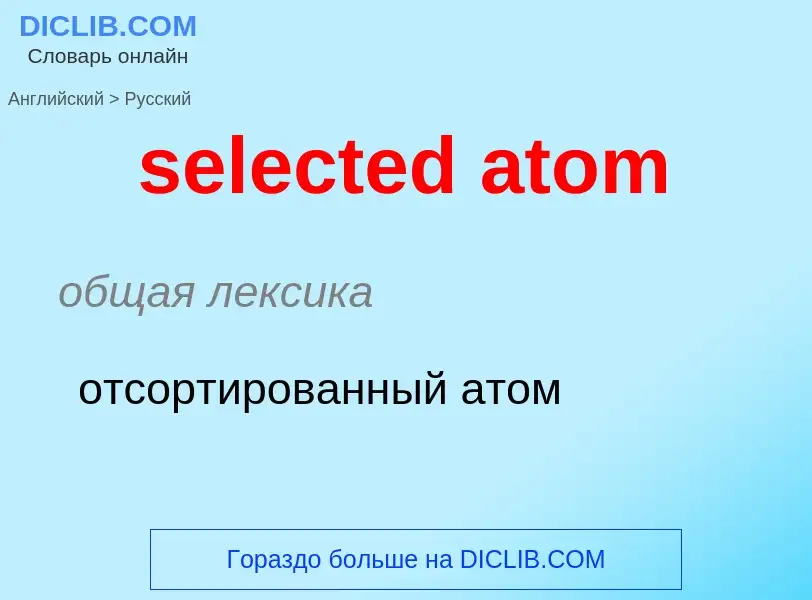Tradução e análise de palavras por inteligência artificial ChatGPT
Nesta página você pode obter uma análise detalhada de uma palavra ou frase, produzida usando a melhor tecnologia de inteligência artificial até o momento:
- como a palavra é usada
- frequência de uso
- é usado com mais frequência na fala oral ou escrita
- opções de tradução de palavras
- exemplos de uso (várias frases com tradução)
- etimologia
selected atom - tradução para russo
общая лексика
отсортированный атом
математика
атомарная (неделимая) система
Definição
Wikipédia
The name Atom applies to a pair of related Web standards. The Atom Syndication Format is an XML language used for web feeds, while the Atom Publishing Protocol (AtomPub or APP) is a simple HTTP-based protocol for creating and updating web resources.
Web feeds allow software programs to check for updates published on a website. To provide a web feed, the site owner may use specialized software (such as a content management system) that publishes a list (or "feed") of recent articles or content in a standardized, machine-readable format. The feed can then be downloaded by programs that use it, like websites that syndicate content from the feed, or by feed reader programs that allow internet users to subscribe to feeds and view their content.
A feed contains entries, which may be headlines, full-text articles, excerpts, summaries or links to content on a website along with various metadata.
The Atom format was developed as an alternative to RSS. Ben Trott, an advocate of the new format that became Atom, believed that RSS had limitations and flaws—such as lack of on-going innovation and its necessity to remain backward compatible—and that there were advantages to a fresh design.
Proponents of the new format formed the IETF Atom Publishing Format and Protocol Workgroup. The Atom Syndication Format was published as an IETF proposed standard in RFC 4287 (December 2005), and the Atom Publishing Protocol was published as RFC 5023 (October 2007).


![hydrogen-like]] atomic orbitals showing probability density and phase ('''g''' orbitals and higher are not shown) hydrogen-like]] atomic orbitals showing probability density and phase ('''g''' orbitals and higher are not shown)](https://commons.wikimedia.org/wiki/Special:FilePath/Atomic-orbital-clouds spdf m0.png?width=200)

![Graphic illustrating the formation of a [[Bose–Einstein condensate]] Graphic illustrating the formation of a [[Bose–Einstein condensate]]](https://commons.wikimedia.org/wiki/Special:FilePath/Bose Einstein condensate.png?width=200)
![Atoms and molecules as depicted in [[John Dalton]]'s ''A New System of Chemical Philosophy'' vol. 1 (1808) Atoms and molecules as depicted in [[John Dalton]]'s ''A New System of Chemical Philosophy'' vol. 1 (1808)](https://commons.wikimedia.org/wiki/Special:FilePath/Daltons symbols.gif?width=200)
